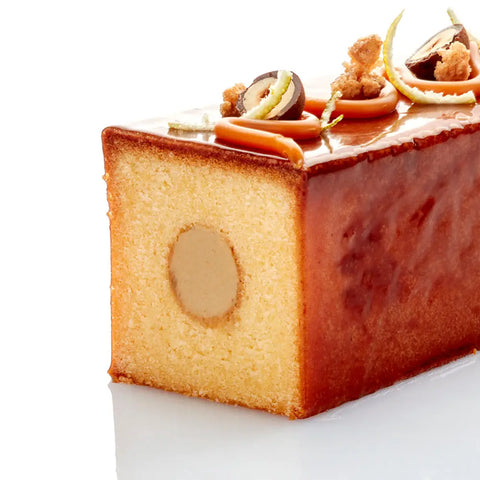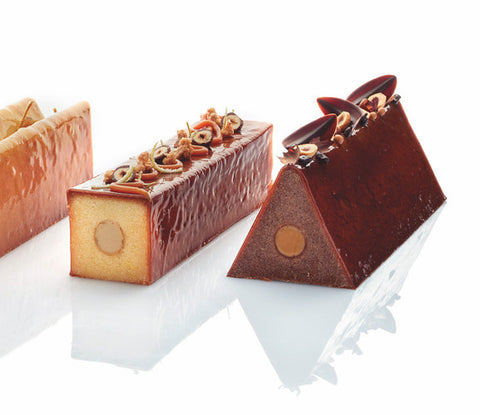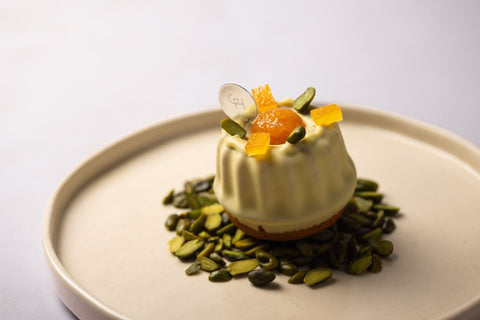
The Modern Art of Travel Cakes: A Culinary Journey for Pastry Chefs
In the world of pastry, the gâteau de voyage, or travel cake, stands as a testament to the blend of tradition and modernity. Originating from a time when practicality was paramount, travel cakes were designed for durability, portability, and an extended shelf life. Yet today, they have evolved into sophisticated creations that exemplify the artistry and precision of the modern pastry chef. Whether destined for a long journey, a special gift, or simply as a luxurious treat, travel cakes bring together timeless techniques with contemporary flavors and textures.
A Classic Concept Reimagined

The essence of a travel cake lies in its ability to maintain flavor and texture over time. Unlike delicate pastries that demand immediate consumption, travel cakes are formulated to age gracefully. This resilience is achieved through the use of moisture-retaining ingredients like honey, dried fruits, and nuts, which not only enhance the cake's taste but also contribute to its longevity. These elements help keep the crumb tender, allowing the cake to stay moist yet firm, making it ideal for transporting without sacrificing quality.
In the baking process, travel cakes are typically baked low and slow. This method ensures even cooking, creating a dense yet tender texture that holds up against the rigors of travel. Longer baking times and careful control of temperature prevent the cake from drying out or becoming overly crumbly, allowing it to maintain a beautiful structure.
Flavors That Transcend Borders
Today, the gâteau de voyage has moved beyond its rustic origins to incorporate a rich variety of flavors and textures. Professional pastry chefs are exploring new territories, drawing inspiration from global culinary traditions and fusing them with classic French techniques. Here are some examples of travel cakes that blend heritage with modern flair:

-
Pound Cake: This quintessential travel cake remains a favorite due to its buttery richness and simplicity. Modern versions may include twists like lemon zest, vanilla bean, or even a touch of lavender for a refined aroma that elevates the classic recipe.
-
Fruit Cake: Once known as a dense and overly sweet holiday staple, the fruit cake has found new life in high-end pastry. Chefs now focus on balancing the sweetness of dried fruits with the acidity of citrus peels and the warmth of aged spirits, creating a rich, aromatic profile that pairs beautifully with a cup of tea.
-
Kouign Amann: Hailing from Brittany, this buttery, caramelized delight marries the concept of a travel cake with the decadence of laminated dough. Its layers of sugar and butter create a caramelized crust that gives way to a soft, tender interior—perfect for those seeking an elevated twist on a traditional cake.
-
Financiers: Originally made to be portable treats for busy bankers, these small almond cakes have a moist, tender crumb and a subtle nutty flavor. Their compact size makes them ideal for gifting or as an accompaniment to afternoon coffee.
-
Brownies: The rich, fudgy texture of brownies makes them a go-to travel cake for chocolate lovers. Professional pastry chefs can experiment with variations like adding a touch of sea salt, swirling in raspberry puree, or folding in caramelized nuts for added complexity.
-
Carrot Cake: While frosting is typically reserved for stationary cakes, a lightly spiced carrot cake can stand alone as a deliciously moist travel cake. Modern versions might incorporate flavors like ginger, orange zest, or even toasted seeds for a subtle crunch.
-
Banana Bread: This humble classic has become a canvas for innovation, with chefs experimenting with inclusions like dark chocolate chunks, tahini, or roasted walnuts. Its natural sweetness and dense texture make it perfect for enjoying on the go.
The Art of Crafting the Perfect Travel Cake
For today’s pastry professionals, the appeal of travel cakes lies in their versatility and potential for creativity. To master the art of the travel cake, attention must be paid not only to the ingredients but also to the techniques that define their texture and structure. This balance of traditional wisdom and modern innovation is what elevates a travel cake from being simply good to truly exceptional.

In creating a travel cake, consider the following:
-
Balancing Moisture: Using ingredients like buttermilk, fruit purees, or syrups can help retain moisture without compromising the cake's stability. A brush of simple syrup or glaze can also enhance both flavor and longevity.
-
Layered Textures: Incorporating a crunchy element, such as a layer of praline or a crumble topping, can add a delightful contrast to the tender crumb of the cake, creating a more complex eating experience.
-
Elegant Presentation: While the rustic charm of a travel cake is part of its appeal, a sleek finish with a touch of glaze or a sprinkle of powdered sugar can elevate its presentation. Thoughtfully designed packaging can turn a travel cake into a luxurious gift, perfect for special occasions or high-end markets.
The Future of Gâteau de Voyage: A Symbol of Culinary Craftsmanship

In today's culinary landscape, where chefs and consumers alike are drawn to authenticity and craftsmanship, travel cakes are more relevant than ever. They are a bridge between the comforting nostalgia of traditional recipes and the adventurous spirit of modern gastronomy. By embracing the history of the gâteau de voyage while pushing the boundaries of flavor and technique, pastry chefs have transformed this humble treat into a true symbol of their art.
Whether you are crafting a classic pound cake or exploring new flavor combinations, the art of the travel cake invites you to slow down, savor each ingredient, and share a piece of your culinary journey with others—one slice at a time.
